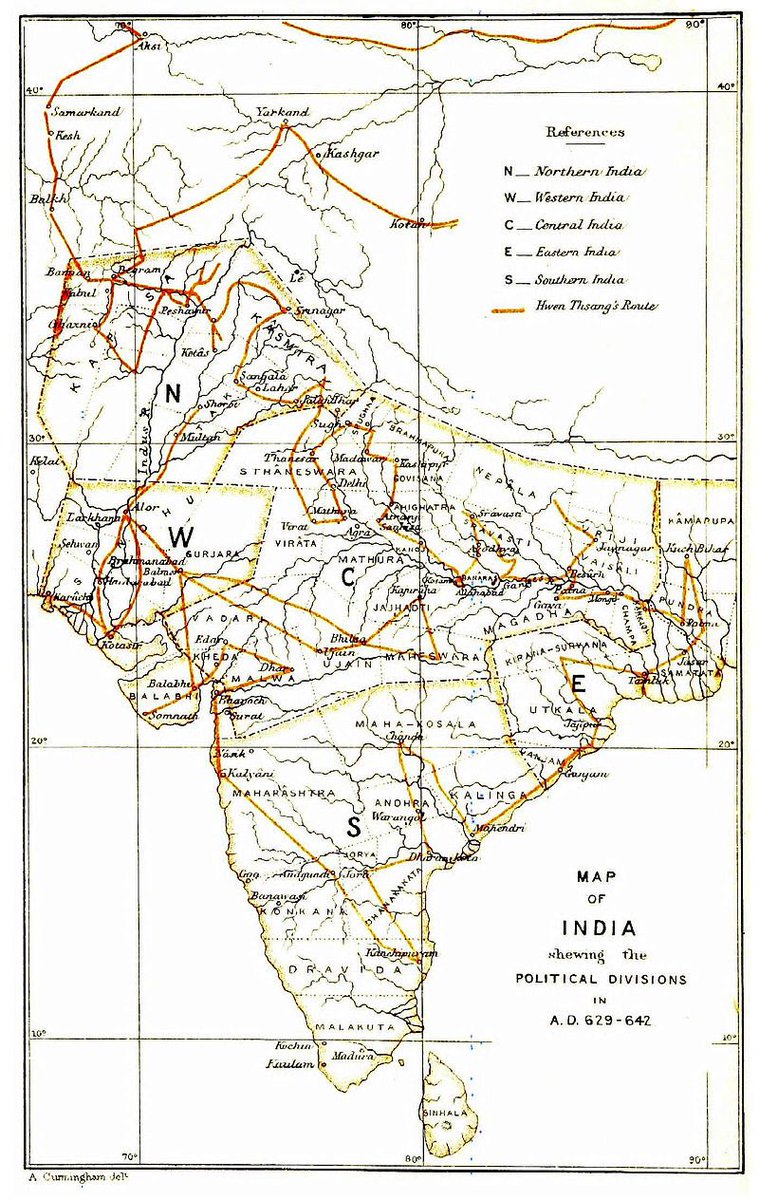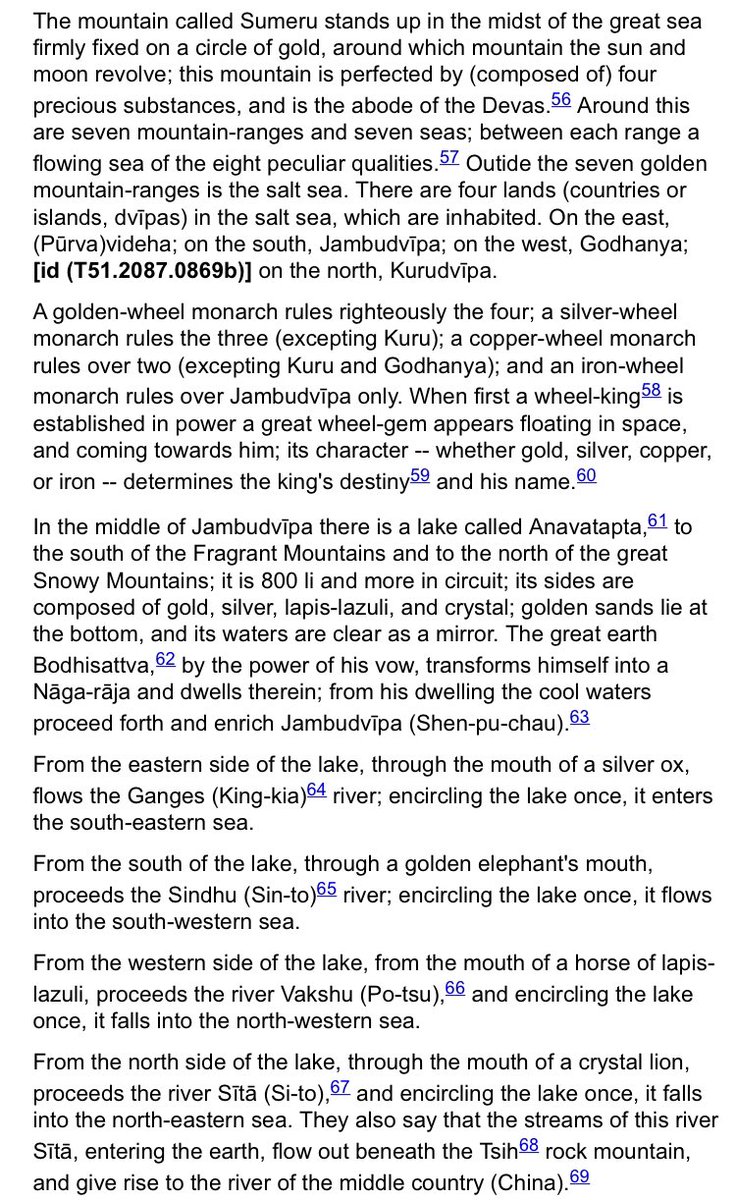mbingenheimer.net/tools/beal/xiy…

Hiuen Tsang described many kingdoms and mentioned their circumferences and distances in the Chinese unit of “Li”, which in the Tang Dynasty period was apparently 332 m (~1/3 km).
So the geography of various kingdoms described by Hiuen Tsang doesn’t seem to align with the chronology of South Indian kings.
Read the text, people ! It is translated into English. At least, look for Tsang’s description of your ancestral homeland. 😄
wisdomlib.org/definition/ana…

1) Golden wheel who rules all 4 directions
2) Silver wheel who rules Sindhu, Gangā & Vakshu
3) Copper wheel who rules Sindhu & Gangā
4) Iron wheel who rules Sindhu only!
The river basin of Sīta (Tarim) was called “Kuru dvīpa”. That was the first to get disconnected from Indic civilization.
The river basin of Vakshu (Oxus) was called “Godhanya”. That was the second to get disconnected.
North: wild, aggressive
West: money-minded, impolite
South: quick-witted
East: wise, virtuous




